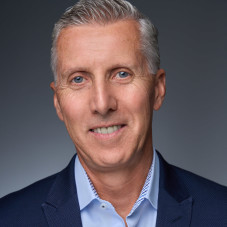AMT is now 120 years old. Because I have the honor of being the president of the association at the time of this remarkable anniversary, it might be expected that I’d talk about my predecessors or the founding or something else historical.
While things like that are good and well, I’d rather look forward. And it occurs to me that for success, whether at an organization like AMT or a business like the one you work at, this phrase rings true: “It isn’t a sprint; it’s a marathon.” And marathons are something I know more than a little about.
When I was young, I engaged in any sport that involved a ball, and I didn’t have much interest in running. That lasted until a work assignment for an automation company took me to Germany years later. While there, my wife ran for exercise, and I joined her a few times … but running aimlessly wasn’t for me. Maybe it was my engineering mindset, but I needed a goal. This led me to racing – and a reason to run.
I signed up for a 10K. Then a half marathon. A full marathon. Before long, I’d done a couple dozen marathons. I decided that if I could run 26 miles, I could run 50 miles. So, I signed up for a 50-miler. At the beginning of that race, another participant asked me, “Are you doing the 50 or the 100?” After a couple of 50s, I started 100s. I’m not a gifted runner but a committed one. When you get into ultra-running – such as 100-mile races in the mountains between 10,000 and 14,000 feet of elevation, on rocks, in mud, and in all sorts of weather – there are things you need to do to prepare.
Many of the lessons I’ve learned in order to develop the capability to run for 30 hours straight (yes, you read that right) can apply to the undertakings we face every day in our jobs. Whether it is sitting at our desks or walking the shop floor, there are things we need to do to prepare ourselves to reach the goal – and then to keep at it.
Goal
For me, running is about the goal I’ve set to take that extra step, to go that extra mile. Literally. Similarly, a company must be motivated by more than just money. There’s nothing wrong with making money, and you’re not going to be in business if you don’t, but something bigger must motivate you and your team – developing the best equipment, solving an “unsolvable” manufacturing problem, doing something that hasn’t be done before. Motivation matters.
The Run
When running a 100-mile race, I constantly analyze everything – distance, temperature, altitude, nutrition. Sometimes I run in the dark and on trails, so awareness is essential. Data comes in, and calculations are performed in real time to keep going.
My backpack is optimized for the race, from liquids to outerwear. My shoes match the terrain: strong legs don’t matter with blisters.
Similarly, companies need the right equipment to accomplish their objectives. This may cost more than alternatives but may be essential. While a jacket that weighs, say, 13 ounces would be a whole lot cheaper than a three-ounce jacket, those 10 ounces make a huge difference at mile 80. The right equipment matters.
And while my sensors are my eyes, ears, skin, legs, and feet, a manufacturing company needs an array of sensors to provide the data that determines whether things are going in the right direction. You must be aware of it and use it.
Staying With It
The Leadville Trail 100 is a 100-mile race through the Rocky Mountains. I tried three times before I finished. Each time I didn’t make it, I figured out something to improve, whether it was how to adapt to the altitude or support a knee that was troubling me. Try. Modify. Try. Adjust. Repeat.
It is very much like launching a new product. If you innovate, you’re going to be faced with some failures. So, you must try, modify, try, adjust ….
Motivation
Yes, motivation is fundamental. You’ve got to be motivated when you’re running, because it is going to hurt – hard. Sometimes during a run, I think to myself, “What kind of idiot am I? I’ve paid to do this!” But I have the motivation to keep going – walking if my legs won’t run.
That motivation is the thing that any manager needs to keep the team moving ahead despite supply chain snafus, down equipment, and a whole raft of other challenges.
Trust me: It can be done. AMT has been at it for 120 years.





